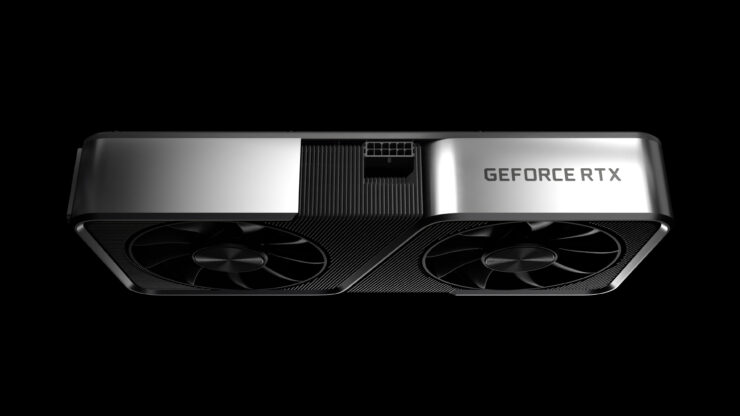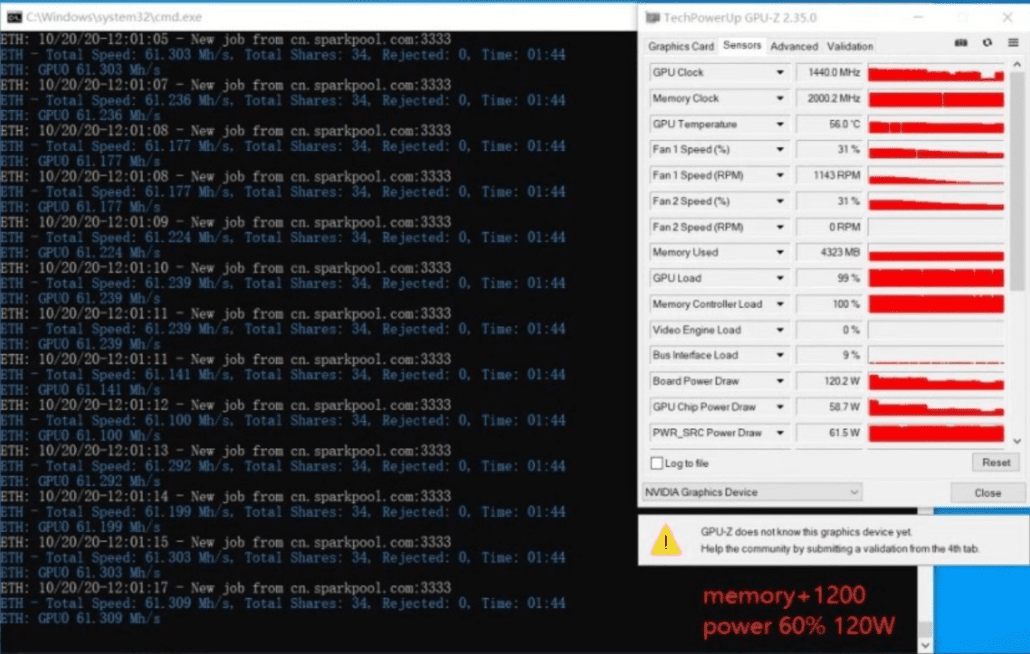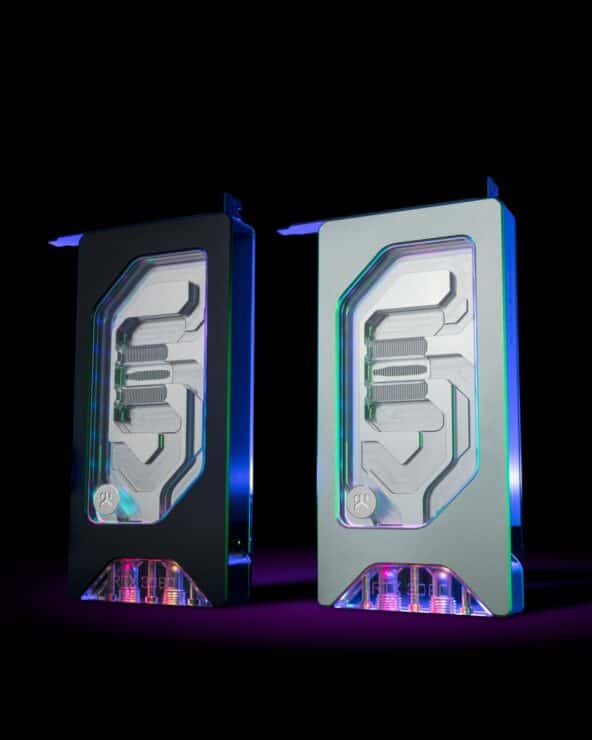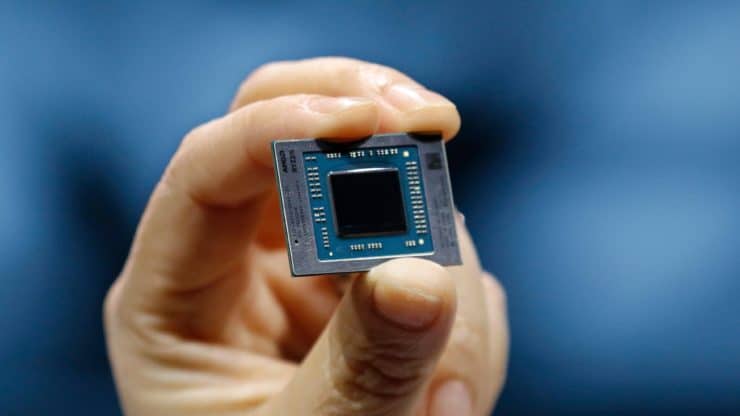
A range of benchmarks for the NVIDIA GeForce RTX 3060 Ti graphics card has leaked out by Videocardz (via TUM_APISAK & Chiphell). The benchmarks show several synthetic results and crypto mining performance of the upcoming Ampere-based mainstream graphics card which launches next week.
NVIDIA GeForce RTX 3060 Ti 3DMark & Geekbench Benchmarks Leak Out, 10% Slower Than RTX 3070 For Around $100 US Less – Mining Performance Also Detailed
The NVIDIA GeForce RTX 3060 Ti is going to be a brand new entry in the RTX 30 series lineup. It is aimed at the mainstream segment around $400 US and will deliver performance faster than the GeForce RTX 2080 SUPER while coming close to the GeForce RTX 2080 Ti with RTX & DLSS options enabled.
NVIDIA GeForce RTX 3060 Ti Graphics Card Specifications
The specifications for the GeForce RTX 3060 Ti feature the GA104 GPU which confirms that this is the second GPU to feature the said chip. There’s no specific variant or SKU number mentioned but previous reports have hinted at the GA104-200 SKU for the GeForce RTX 3060 Ti.
The GA104-200 GPU on the NVIDIA RTX 3060 Ti graphics card features 4864 CUDA Cores, 80 ROPs, clock speeds 1410 MHz base, and 1665 MHz boost. Based on the specs, the card should deliver an effective compute horsepower of 16.2 TFLOPs.

For memory, the graphics card will feature 8 GB of GDDR6 memory which will be running across a 256-bit bus interface. The memory clock for the GDDR6 memory would be maintained at 1750 MHz or 14 Gbps effective which rounds up a total bandwidth of 448 GB/s. The pixel and texture fillrate are both reported at 133.2 GPixel/s & 674.3 GTexel/s, respectively. We expect the RTX 3060 Ti to land around $399 US in terms of pricing.
NVIDIA GeForce RTX 30 Series ‘Ampere’ Graphics Card Specifications:
| Graphics Card Name | NVIDIA GeForce RTX 3050 | NVIDIA GeForce RTX 3050 Ti | NVIDIA GeForce RTX 3060 | NVIDIA GeForce RTX 3060 Ti | NVIDIA GeForce RTX 3070 | NVIDIA GeForce RTX 3070 Ti? | NVIDIA GeForce RTX 3080 | NVIDIA GeForce RTX 3080 Ti? | NVIDIA GeForce RTX 3090 |
|---|---|---|---|---|---|---|---|---|---|
| GPU Name | Ampere GA107 | Ampere GA106? | Ampere GA106? | Ampere GA104-200 | Ampere GA104-300 | Ampere GA102-150 | Ampere GA102-200 | Ampere GA102-250 | Ampere GA102-300 |
| Process Node | Samsung 8nm | Samsung 8nm | Samsung 8nm | Samsung 8nm | Samsung 8nm | Samsung 8nm | Samsung 8nm | Samsung 8nm | Samsung 8nm |
| Die Size | TBA | TBA | TBA | 395.2mm2 | 395.2mm2 | 628.4mm2 | 628.4mm2 | 628.4mm2 | 628.4mm2 |
| Transistors | TBA | TBA | TBA | 17.4 Billion | 17.4 Billion | 28 Billion | 28 Billion | 28 Billion | 28 Billion |
| CUDA Cores | 2304 | 3584 | 3840 | 4864 | 5888 | 7424 | 8704 | 10496 | 10496 |
| TMUs / ROPs | TBA | TBA | TBA | 152 / 80 | 184 / 96 | 232 / 80 | 272 / 96 | 328 / 112 | 328 / 112 |
| Tensor / RT Cores | TBA | TBA | TBA | 152 / 38 | 184 / 46 | 232 / 58 | 272 / 68 | 328 / 82 | 328 / 82 |
| Base Clock | TBA | TBA | TBA | 1410 MHz | 1500 MHz | TBA | 1440 MHz | TBA | 1400 MHz |
| Boost Clock | TBA | TBA | TBA | 1665 MHz | 1730 MHz | TBA | 1710 MHz | TBA | 1700 MHz |
| FP32 Compute | TBA | TBA | TBA | 16.2 TFLOPs | 20 TFLOPs | TBA | 30 TFLOPs | TBA | 36 TFLOPs |
| RT TFLOPs | TBA | TBA | TBA | 32.4 TFLOPs | 40 TFLOPs | TBA | 58 TFLOPs | TBA | 69 TFLOPs |
| Tensor-TOPs | TBA | TBA | TBA | TBA | 163 TOPs | TBA | 238 TOPs | TBA | 285 TOPs |
| Memory Capacity | 4 GB GDDR6? | 6 GB GDDR6? | 6 GB GDDR6? | 8 GB GDDR6 | 8 GB GDDR6 | 10 GB GDDR6X? | 10 GB GDDR6X | 20 GB GDDR6X | 24 GB GDDR6X |
| Memory Bus | 128-bit | 192-bit? | 192-bit? | 256-bit | 256-bit | 320-bit | 320-bit | 320-bit | 384-bit |
| Memory Speed | TBA | TBA | TBA | 14 Gbps | 14 Gbps | TBA | 19 Gbps | 19 Gbps | 19.5 Gbps |
| Bandwidth | TBA | TBA | TBA | 448 Gbps | 448 Gbps | TBA | 760 Gbps | 760 Gbps | 936 Gbps |
| TGP | 90W? | TBA | TBA | 180W? | 220W | 320W? | 320W | 320W | 350W |
| Price (MSRP / FE) | $149? | $199? | $299? | $399 US? | $499 US | $599 US? | $699 US | $899 US? | $1499 US |
| Launch (Availability) | 2021? | 2021? | 2021? | November 2020? | 29th October | Q4 2020? | 17th September | January 2021? | 24th September |
NVIDIA GeForce RTX 3060 Ti 3DMark Benchmarks
Coming to the benchmarks, we first have the 3DMark Fire Strike and Time Spy results leaked out by Videocardz which show a graphics score of 30,706 in Fire Strike and 12,175 in Time Spy. Compared to the GeForce RTX 3070, the RTX 3060 Ti is around 10% slower if we factor in custom models that will offer higher performance. The RTX 2080 Ti is much ahead with a 15% lead over the 3060 Ti and the RX 6800 is about 40% faster on average in Fire Strike and 25% in Time Spy.

The RX 6800 retails for a $149 US higher price if we consider a $399 US price point as the official MSRP for the 3060 Ti. It will be interesting to see if this price to performance proposition is also similar in AMD’s RX 6700 series mainstream performance offerings which will compete with the RTX 3060 Ti.
NVIDIA GeForce RTX 3060 Ti Geekbench Benchmarks
TUM_APISAK has also discovered entries of the GeForce RTX 3060 Ti graphics card within the Geekbench database. The graphics card scores the following numbers in the various tests and results vary depending on the API used.
- RTX 3060 Ti – Open CL (GB5) – 123279
- RTX 3060 Ti – CUDA (GB5) – 133974
- RTX 3060 Ti – Vulkan (GB5) – 107979
- RTX 3060 Ti – OpenCL (GB4) – 326720
The GPU was apparently tested by both ASUS and MSI, internally hence the Geekbench V4 and V5 benchmarks are based on different test setups. The MSI results are based on an AMD Ryzen 5000 platform while the ASUS results are based on an Intel 10th Gen Core i9 platform. In CUDA, the RTX 3060 Ti is 8% slower than the RTX 3070 while in Vulkan, for some odd reason, it’s 10% faster and a whole 30% faster than RX 6800.
NVIDIA GeForce RTX 3060 Ti Mining Performance
The mining performance numbers for the GeForce RTX 3060 Ti were also reported at Chiphell. The card was adjusted to 120W which is a 60% reduction from its stock TGP of 200W while the memory was overclocked to an effective 16 Gbps (vs 14 Gbps reference). In Etherum, the graphics card was able to crunch 61 MH/s which is 10 MH/s higher than the Radeon RX 5700 (tuned to 160W). Mining performance seems to be pretty decent given the lower wattage but at the same time, these results may affect availability of the card as miners can flock to buy the card as RX 5700 series was affected by miners soon after launch too.

The GPU was running at clocks of 1440 MHz with the memory clock at 2000 MHz (16 Gbps effective) and temperatures were reported at 56C.
NVIDIA GeForce RTX 3060 Ti Ashes of The Singularity Benchmarks
Lastly, we have the Ashes of The Singularity benchmarks for the RTX 3060 Ti which were also first spotted by TUM_APISAK and Videocardz. At 1080p, the graphics card scores 7900 points in CRAZY preset. This is 14% lower than the RTX 3070 and 20% lower than the Radeon RX 6800. The same is the case with 4K where the RTX 3060 ti is 8% slower than the RTX 3070 and 24% slower than the Radeon RX 6800.
The NVIDIA RTX 3060 Ti is planned for launch on 2nd December and will be available in several custom variants at launch.





More Stories
EKWB Unveils The Quantum Vector FE RTX 3080 D-RGB – Special Edition Blocks For GeForce RTX 3080 FE Graphics Card
AMD Ryzen 7 5800H 8 Core & 16 Thread Cezanne ‘Zen 3’ High-Performance CPU Shows Up, Early ES Chip With 3.2 GHz Clocks
AMD Ryzen 9 5950X 16 Core Flagship CPU Benchmarked Again, Crushes Intel’s Top Core i9-10980XE 18 Core HEDT Chip